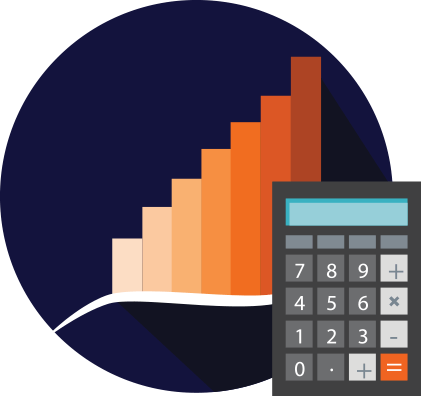When looking at retirement terms, you’re likely to see things like “defined contribution” and “defined benefit.” But what do these terms mean, and how does it affect your retirement? Let’s take a look at defined contribution vs. defined benefit to get an idea of what to expect.
Defined Contribution: You’re Responsible for Your Retirement
A defined contribution is one in which you decide how much to put into your retirement account. You put in a set amount on a regular basis, usually into some type of tax-advantaged investment account. As your investments potentially grow, it funds your retirement.
Defined contribution plans are generally 401(k)s and IRAs. They are portable, meaning you can take them with you when you leave a job.
However, you’re responsible for your retirement. Some companies might offer a matching contribution, but you’re largely in charge of how much goes into your account. How much you have in your portfolio later depends on how much you invest while you’re working, as well as how the market performs.
Defined Benefit: You’re Employer Funds Your Retirement
On the other hand, a defined benefit plan is one in which your employer funds your retirement. The old-school pension is a good example of this. How much you receive in retirement income depends on a formula from your work. It might include how long you work for a company, as well as your salary. In some cases, you might be able to boost your income by putting additional money into the account.
You get a set amount of money during retirement, regardless of what’s happening in the market.
Defined Contribution vs. Defined Benefit: What are you Likely to Have?
There’s a good chance that you’re going to end up with a defined contribution plan. According to the Bureau of Labor Statistics, only about 15% of workers have access to a defined benefit plan. This is because, for companies, the defined benefit setup tends to be more expensive for them. They have to provide guarantees of income, and administering the plan can also be expensive.
On the other hand, a defined contribution plan is much easier to administer and costs much less. Plus, the onus is on the employee to ensure they’re setting aside enough money to build a retirement portfolio to support their income needs later.
However, the main advantage of the defined contribution plan is its portability. You can take it with you to another job or roll it into an IRA. The money remains yours, and you can choose (within guidelines) the investments that you want to use.
Plan for Retirement with a Defined Contribution Plan
Because you’re probably going to have a defined contribution vs. defined benefit plan for retirement investing, it’s important to have a plan.
Here are some tips that can help you plan ahead to build your portfolio ahead of time:
- If your employer offers matching contributions, take advantage of them. Try to get the maximum allowable match.
- Consider different types of accounts. Just because you have access to an employer-sponsored plan with a match, don’t assume it’s your only choice. Think about how you can use different types of investment accounts for retirement to help meet your goals.
- Start investing early on. Even if you don’t have access to an employer-sponsored plan, consider opening an IRA so that you can start setting aside money for retirement in a tax-advantaged account. Realize that even with a small start, you can get ahead over time.
- Increase your investment as you’re able. As you begin earning more money, make it a point to boost your retirement savings.
- Be consistent. When growing wealth through retirement investing, consistency is key. Make sure you keep investing each week or month. Make it automatic, having it taken from your paycheck or setting up recurring transfers.
Bottom Line
For many people, a defined contribution plan is the only choice for retirement investing. While some workers have access to a defined benefit plan or access to a hybrid, most employees need to plan for their own retirement.
Don’t expect that you will have a set amount. Consider setting aside between 10% and 20% of your income in a retirement account that can grow over time. You’ll need to make sure you’re setting aside enough money to reach your goals. (Use our Wealth Calculator to estimate how much you can build up before retirement.)
Even if you can’t set aside that much now, set a goal to increase what you set aside. because you’re going to be responsible for your retirement income, you need to make sure it’s a priority.

